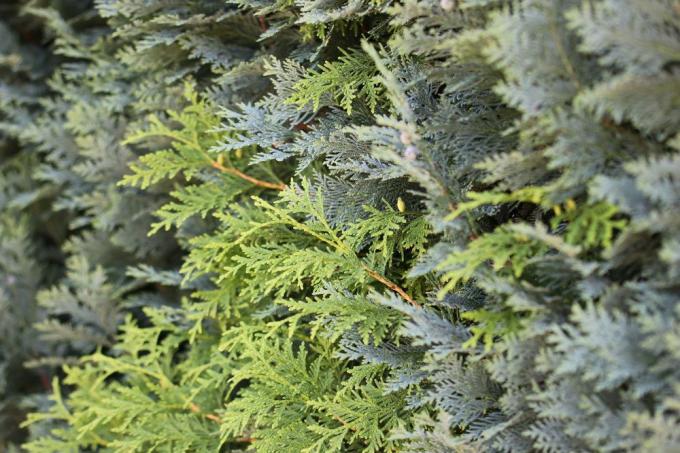
table of contents
- Thuja roots
- Root depth
- Root depth example
Thuja, the tree of life, is a popular guest in numerous ornamental and front gardens. Because of its dense and compact growth, it forms opaque hedges very quickly or can be optimally shaped as a solitary plant. However, the root depth of the thuja should be taken into account when choosing the locations. But how deep is the thuja rooted anyway? We'll tell you and explain what requirements he needs in this regard.
Thuja roots
If you ask the classical literature, you will generally find the blanket statement that Thuja is so-called Shallow root is about plants that have their roots to absorb nutrients and water, especially horizontally and very close to the surface of the earth.
Note: Often shallow roots are mentioned in the same breath with pavement slabs, curbs and other components raised by roots. The tree of life is also able to develop a certain root pressure in very restricted conditions. Light, loosely laid terrace slabs can actually be changed in their position under this pressure. However, the thuja simply lacks the strength to damage sidewalks and damage sewers laid at the correct depth!
Root depth
But it's not that simple. Because although Thuja Brabant tends to spread its roots close to the surface, different situations can have a significant influence on the type of root formation:
Planting
If thuja are planted as hedges, dense, cohesive root networks of the individual plants are created. If they hinder each other, they lead root veins down in order to get to the necessary nutrients and water reserves.
Obstacles
Whether it is a hedge or a solitary plant, if the root formation is hindered laterally, the root systems give way downwards. Possible obstacles can be:
- Other plantings with stronger roots
- Discounts
- Areas with compacted subsoil, such as sidewalks or driveways
- Soil materials unsuitable for rooting, such as crushed stone, coarse gravel, etc., e.g. B. for seepage areas, eaves strips, etc.
Note: Although not every type of soil is a real obstacle, the ability of the soil to penetrate the soil has an influence on the spread of the root ball. The easier the root system can thrive in loose soil, the more likely the root veins will penetrate into the depths. Viewed the other way around, thuja plants have particularly shallow roots in heavy, compact soils with only a superficial, loose humus layer.
care
The tree of life is actually considered to be quite insensitive and frugal. However, if he does not find the small amounts of nutrients and water near the surface that he does absolutely needs, he looks for them in depth and also expands his network of roots in this direction increasingly off.
size
The larger a plant becomes, the more intensively it has to take care of itself through its roots. Although the size of the roots and the root ball also increases with age, a thuja becomes regular cut back, the root pressure is significantly lower than with excessive growth with a constant increase in plant volume.
Root depth example
Of course, it always depends on the specific environmental conditions, on the individual plant and the supply situation, how deeply thuja plants extend their roots. Under “normal” conditions, that is, good care and largely unhindered There is room for development in the breadth, one can assume that the Thuja roots in the first few years not deeper than 30 to 50 centimeters advance. In the case of much older and larger specimens, however, it can also go beyond this. With a stature height of around five meters, roots down to depths of 70 to 100 centimeters be found.





